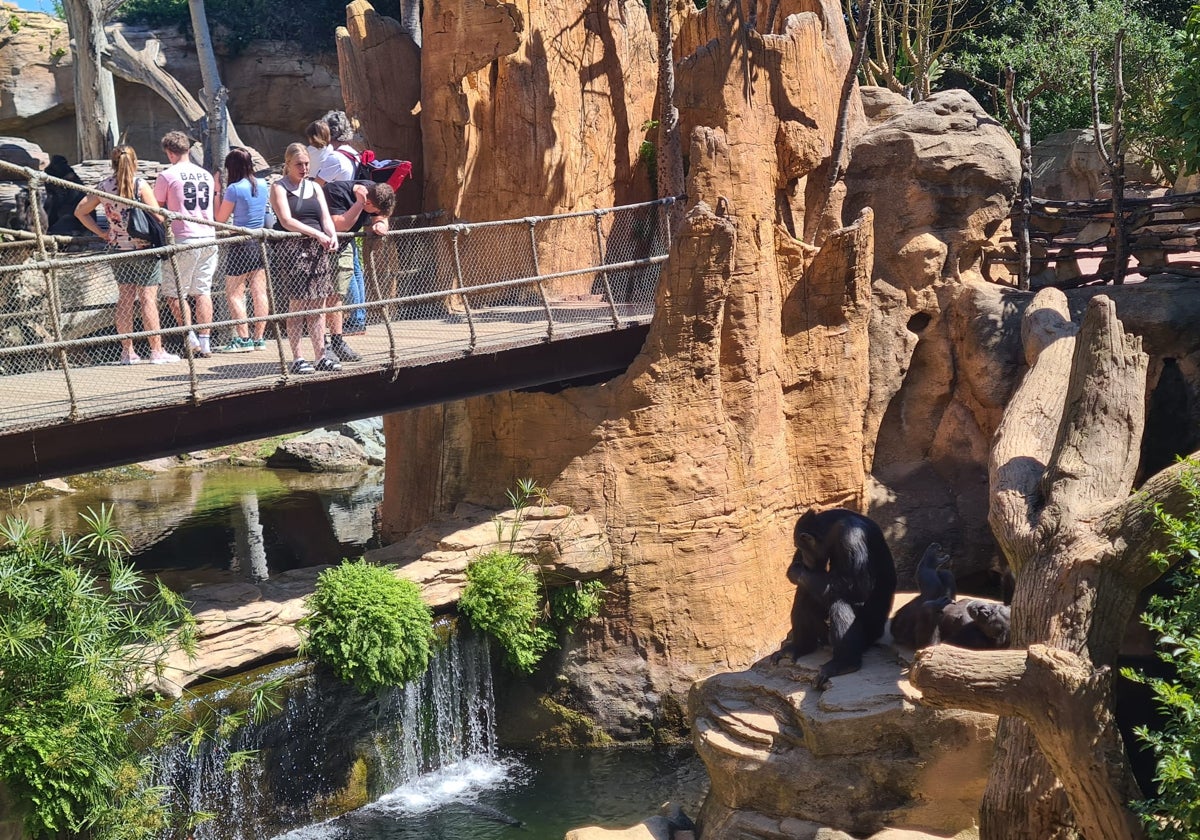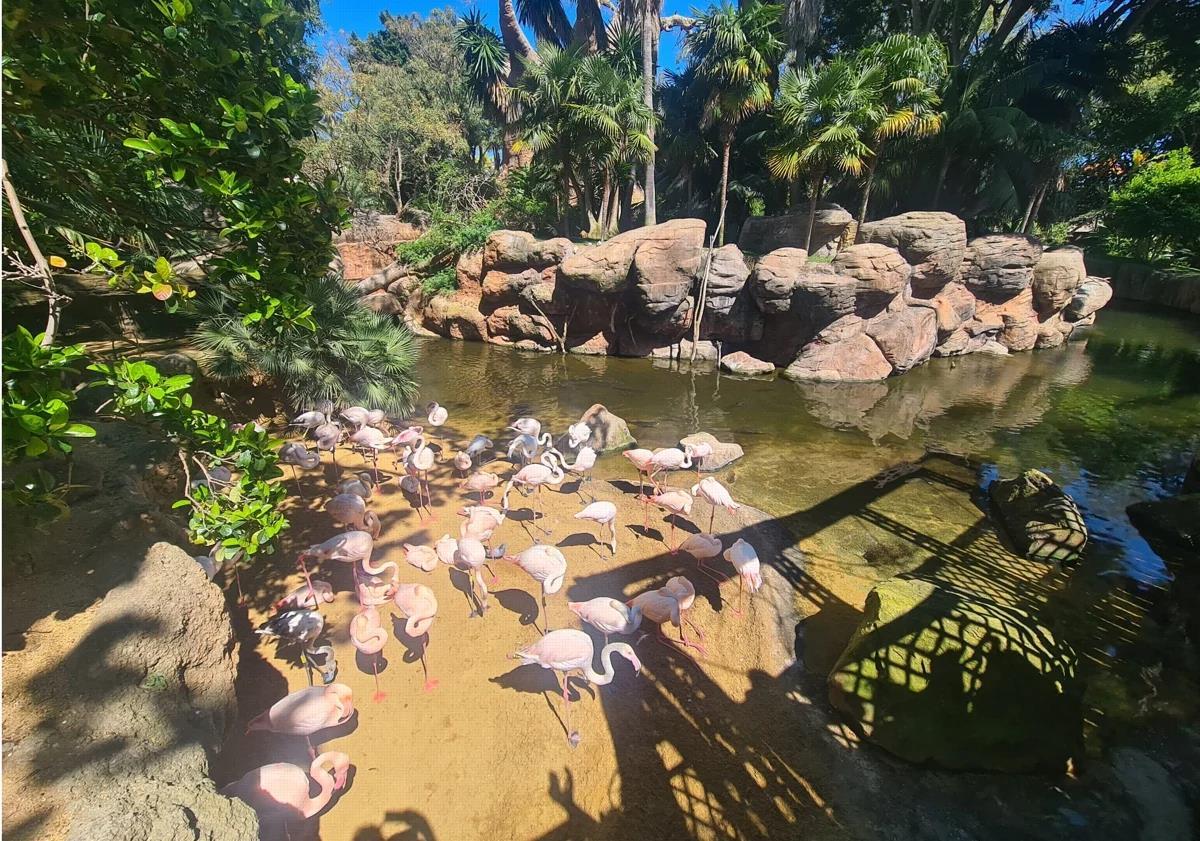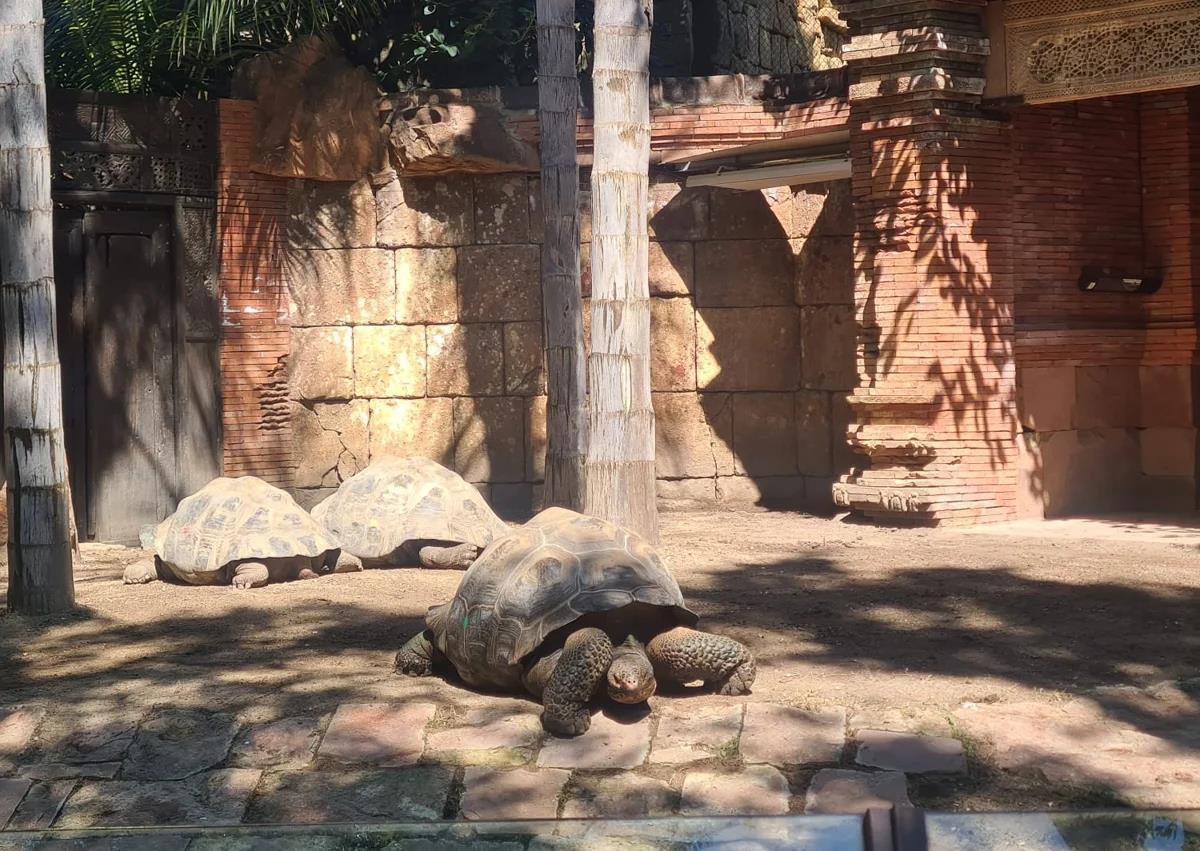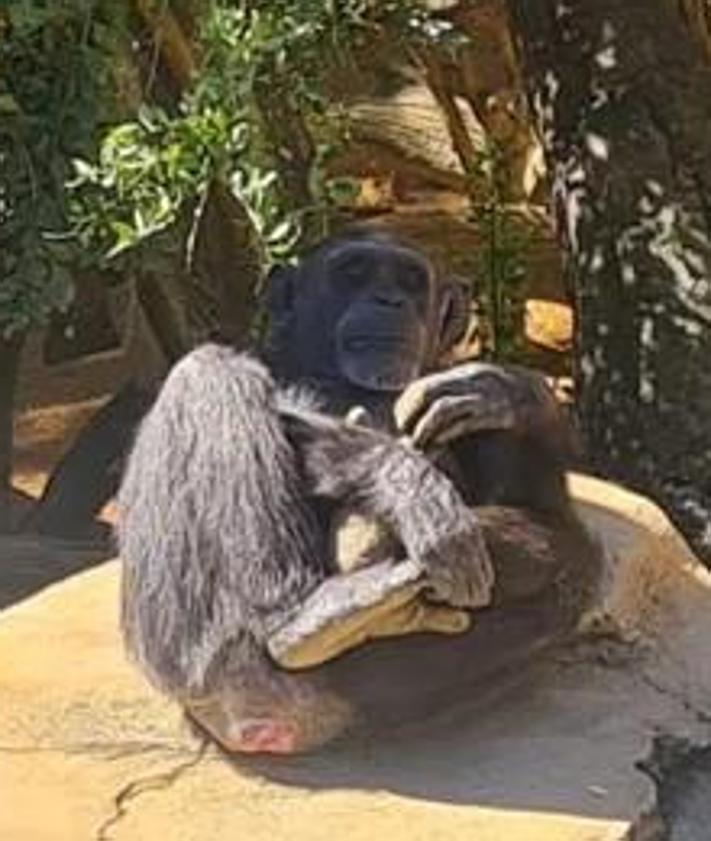

Sections
Highlight

At 7am every day, summer or winter, the keepers at Fuengirola's Bioparc on the Costa del Sol start work. Each one goes to their own department; the bird and land mammal keepers, the reptile keepers and the fish team. In total there are around 20 specialised professionals whose main task is to ensure that the almost eleven thousand animals of 304 different species that live at the zoological park are in the best possible condition. The majority are fish (8,455) and invertebrates (2,119), but there are also 103 mammals, 168 birds, 99 reptiles and 51 amphibians.
The largest team of keepers is the zoology team, i.e. birds and mammals, which consists of 14 people. They all know how to do a bit of everything, but some of these workers have been dealing with certain species for many years and know in detail how they should care for them.
Javier Vicent is head keeper at the zoology section and his job is to coordinate his staff. He explains that the first task every morning is to check on the animals and their habitats. "They have to check that everything is OK, that there has been no fight between them the night before. They clean the facilities and ensure the security of the perimeter fence, especially that there is no risk of escape between the branches of the trees. Although it is not perceptible, everything is designed so that the animals can never enter the public area," he explains.



With all that under control, it's time to start thinking about breakfast. Feeding such a large number of animals, with very different diets, is no easy task. So much so that one of Bioparc's keepers is solely in charge of controlling what each animal eats at each feeding time. In the case of the mammals, almost everything is raw meat and vegetables. The chef also has to factor in that some of them eat two meals a day and others eat up to four.
Once cleanliness, food and safety have been done, it is time to go a step further and somehow relate to the animals in the correct way depending on the species. "Each animal behaves in a different way, with primates you have to show confidence and poise because if they see that you are afraid, they take advantage and play with you to scare you. With herbivores, on the other hand, you have to learn to move cautiously, gently, you can't make any fuss or loud sounds because they are animals that in the wild are prey and run away quickly," explains Vicent.
Primates, in general, are among the animals that need the most time from their keepers, as do snakes, although for quite different reasons. The latter because they need a specific degree of humidity, adequate ventilation, as well as more complex lighting and feeding. Primates need a lot of interaction because they are intelligent beings. "They are very intelligent, they need psychological motivation to keep their mind awake and we do that by trying to break their routine. For example, we give them closed packages with good things inside so that they can find a way to open them and enjoy them," says Vicent.
One of the areas of Bioparc's work is captive breeding programmes, which are managed through the European Endangered Species Programme (EEP). The programme seeks, as its name suggests, to increase the population of species that are endangered in the wild and therefore at serious risk of extinction. Of the 304 species living in Bioparc, 60 are part of conservation programmes, although all of them are threatened at some level.
Under these circumstances, numerous animals come in and out of Bioparc, which is a challenge for the keepers. "When a new animal arrives, it's all about introductions. The first few days we always leave them alone, getting to know the sounds, the schedule, getting used to the environment. And after that phase we do a visual introduction with the rest of their group, always with a fence in between until we see how they react. They themselves give us the clues as to how everything is going. With felines, for example, it is typical that when everything is going well they purr or rub together. A roar or a kick at the fence means we have to wait," explains Vicent.
Among the species at Bioparc, the ones most at risk of extinction are the Sumatran tigers, of which there are only 400 left in the wild, and the hornbills, which live in the Philippines and of which there are only 1,200 documented examples. Incidentally, reproduction is a complicated business among hornbills, as they nest in holes in trees. First the male checks that there is no danger and then invites the female to enter. She gets into the hole with the eggs, closes it, and spends five months locked up, between incubation and breeding, completely isolated and at the expense of the male feeding her through a small hole.
Publicidad
Publicidad
Publicidad
Publicidad
Esta funcionalidad es exclusiva para registrados.
Reporta un error en esta noticia

Debido a un error no hemos podido dar de alta tu suscripción.
Por favor, ponte en contacto con Atención al Cliente.

¡Bienvenido a SURINENGLISH!

Tu suscripción con Google se ha realizado correctamente, pero ya tenías otra suscripción activa en SURINENGLISH.
Déjanos tus datos y nos pondremos en contacto contigo para analizar tu caso

¡Tu suscripción con Google se ha realizado correctamente!
La compra se ha asociado al siguiente email
Comentar es una ventaja exclusiva para registrados
¿Ya eres registrado?
Inicia sesiónNecesitas ser suscriptor para poder votar.